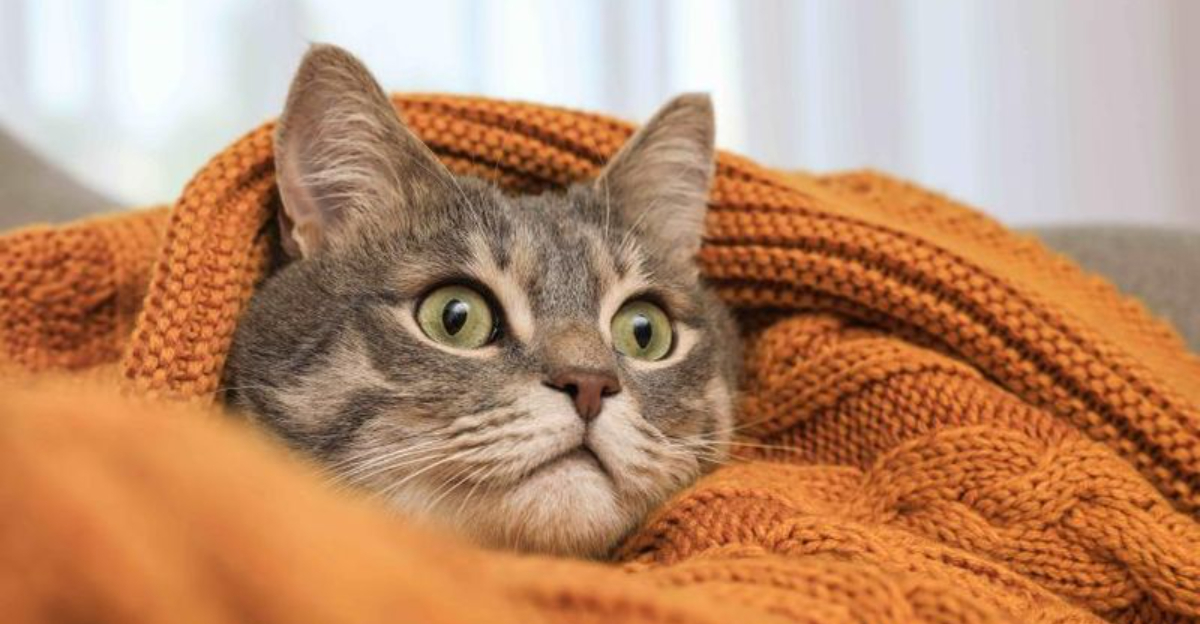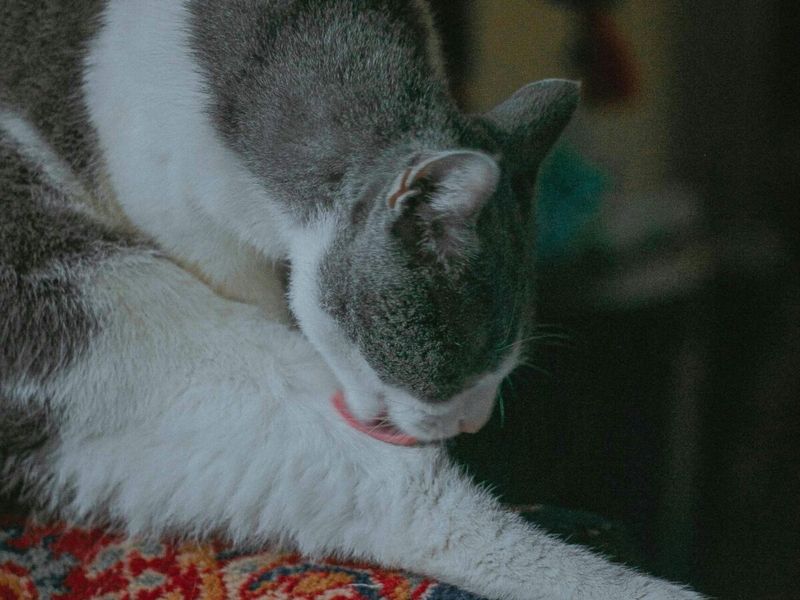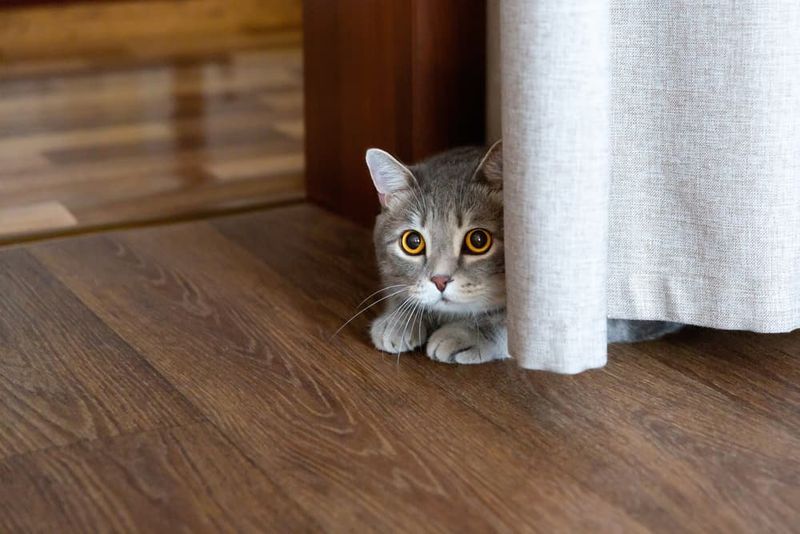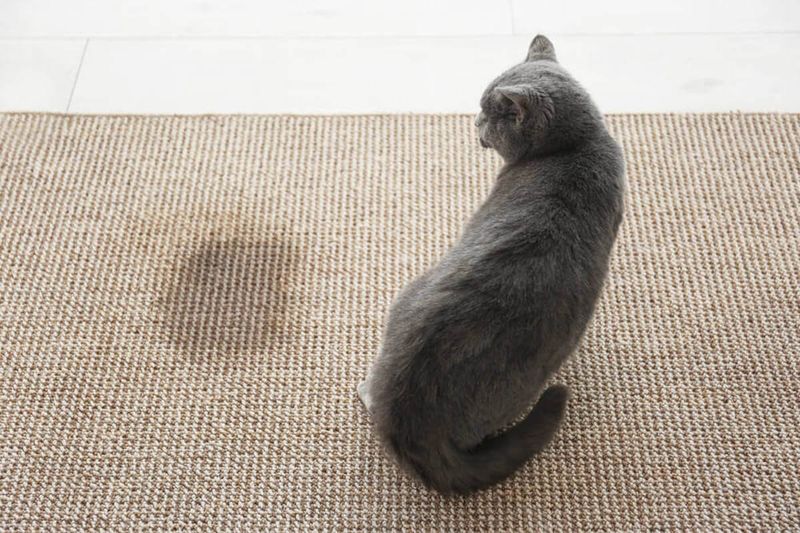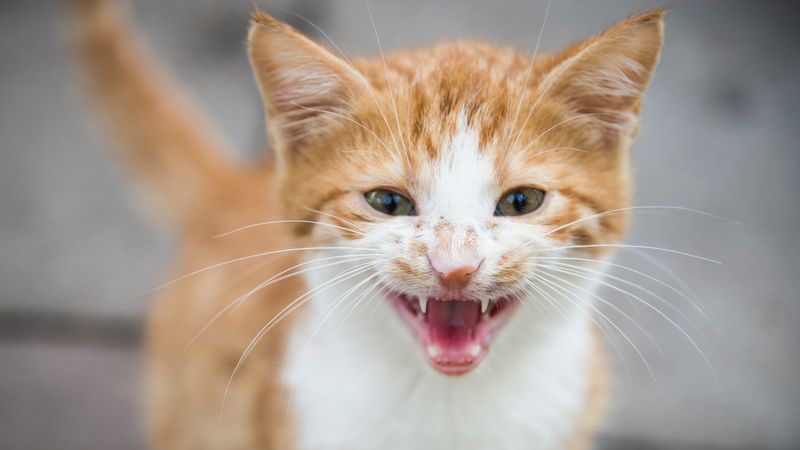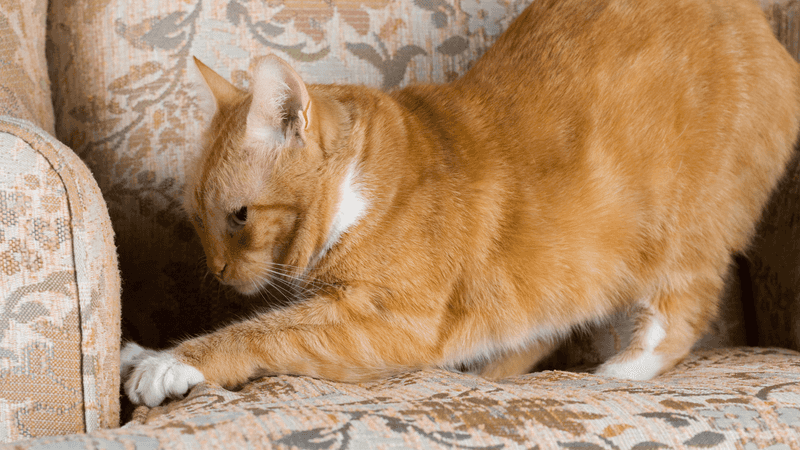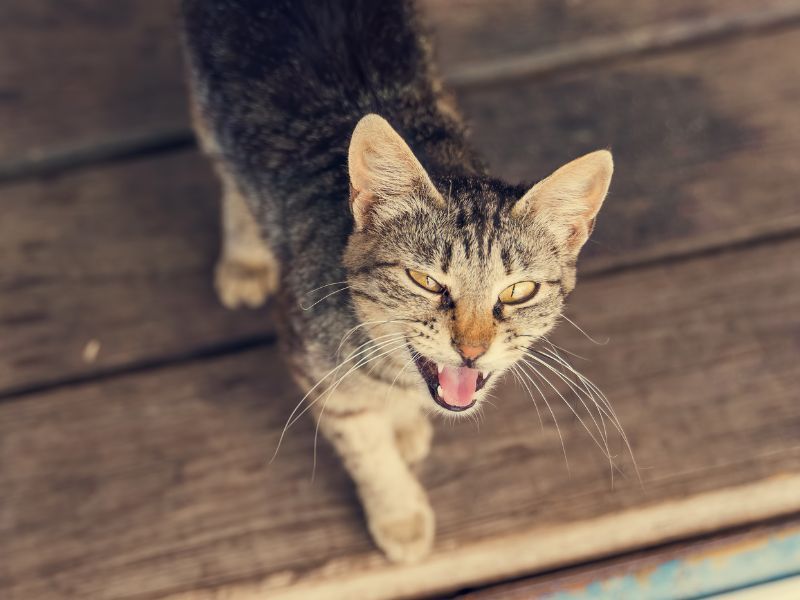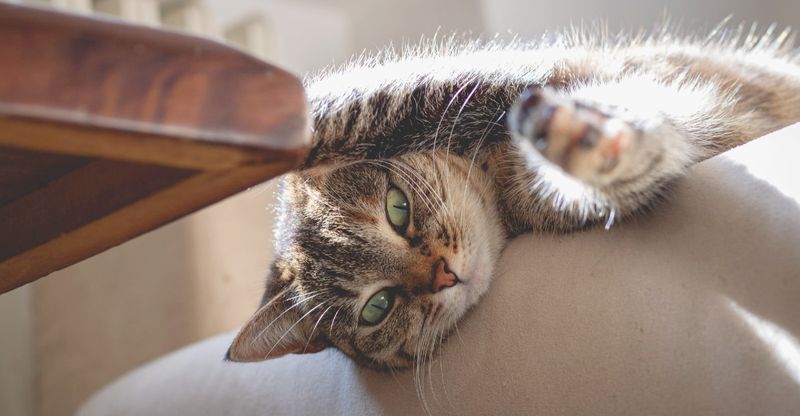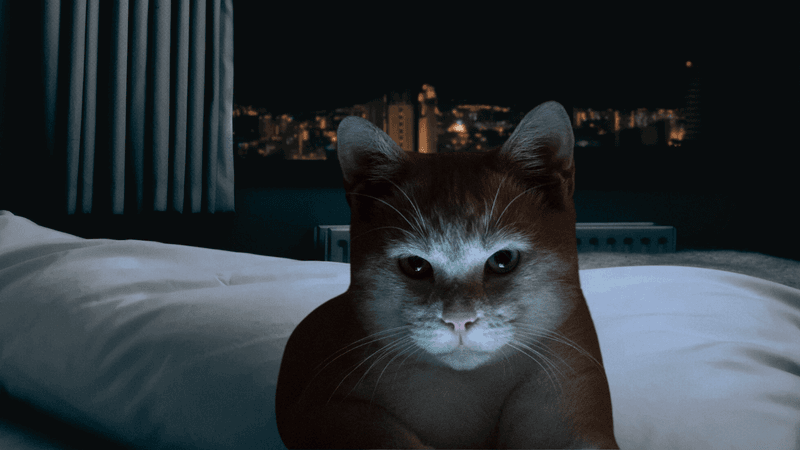📖 Table of Content:
- 1. Excessive Grooming That Never Ends
- 2. Hiding More Than They Used To
- 3. Unpredictable Aggression Toward People or Pets
- 4. Unusual Bathroom Habits Outside the Litter Box
- 5. Increased Vocalization Without Obvious Reason
- 6. Destructive Scratching Beyond Normal Territory Marking
- 7. Changes in Appetite – Eating Too Much or Too Little
- 8. Excessive Shedding and Dandruff During Stressful Times
- 9. Compulsive Behaviors Like Tail-Chasing or Pacing
- 10. Freezing or Trembling When Nothing Seems Wrong
- 11. Sleep Pattern Disruptions and Restlessness
- 12. Excessive Self-Soothing Through Kneading or Sucking
Cats are masters of hiding their feelings, often suffering in silence when stress or anxiety strikes. Many cat owners mistake anxiety symptoms for normal feline behavior, missing crucial signals that their furry friend needs help. Understanding these subtle signs can make a huge difference in your cat’s quality of life and strengthen the bond between you.
1. Excessive Grooming That Never Ends
Cats naturally spend hours grooming themselves, but anxious cats take this behavior to extremes. You might notice bald patches or irritated skin where your cat has obsessively licked or chewed.
This over-grooming serves as a self-soothing mechanism when cats feel stressed or threatened. The repetitive action releases endorphins that temporarily calm them down, similar to how some people bite their nails when nervous.
If your previously well-groomed cat suddenly starts creating bald spots or grooming until their skin becomes raw, something in their environment is likely causing significant anxiety.
2. Hiding More Than They Used To
Suddenly vanishing for hours or even days? Your cat might be dealing with anxiety. While cats naturally enjoy cozy hideaways, anxious cats make disappearing acts their specialty.
Under beds, inside closets, behind furniture – anxious cats seek dark, quiet spaces where they feel protected from perceived threats. This retreat behavior stems from their wild ancestors’ survival instincts. When threatened, hiding was often their best defense.
Pay attention if your normally social cat starts spending most of their time in hard-to-reach places, especially if this change happens after a household disruption like new furniture, visitors, or another pet.
3. Unpredictable Aggression Toward People or Pets
Sweet-natured cats who suddenly hiss, swat, or bite may actually be experiencing anxiety, not having a personality change. This fear-based aggression often appears when a cat feels cornered or threatened with no escape route.
Body language offers important clues: flattened ears, dilated pupils, and a twitching tail typically precede aggressive outbursts. Your cat isn’t being mean – they’re communicating distress the only way they know how.
The triggers vary widely – from loud noises to unfamiliar people or even certain scents. Documenting when these episodes occur helps identify patterns and potential anxiety sources that need addressing.
4. Unusual Bathroom Habits Outside the Litter Box
Finding unexpected puddles or piles around your home often signals cat anxiety rather than bad behavior. Cats naturally prefer using their litter boxes, so avoidance indicates something’s wrong.
Anxiety triggers this behavior by making cats associate their litter box with stress or by creating such an urgent need to eliminate that they can’t reach their designated spot in time. Environmental stressors like new pets, household changes, or even a dirty litter box can spark this reaction.
Medical issues should always be ruled out first, but once health problems are eliminated, addressing underlying anxiety becomes crucial. Many cats develop these habits during periods of significant household change.
5. Increased Vocalization Without Obvious Reason
Sudden chattiness from your normally quiet cat might be their way of expressing anxiety. Excessive meowing, yowling, or crying – especially at unusual times – signals distress rather than just demanding attention.
Anxious cats often vocalize more at night when the house grows quiet and they feel more vulnerable. The change in volume and frequency typically stands out more than occasional communication. Your cat may be trying to self-soothe or call for reassurance.
Senior cats especially show this anxiety symptom as cognitive changes affect their sense of security. Recording these episodes can help veterinarians determine if the behavior stems from anxiety or another medical condition requiring treatment.
6. Destructive Scratching Beyond Normal Territory Marking
Shredded furniture, torn curtains, and damaged doorframes might reveal your cat’s hidden anxiety. While scratching is natural feline behavior for marking territory and maintaining claw health, anxious cats take it to destructive extremes.
The difference lies in intensity and location. Anxious scratching appears frantic rather than deliberate, often targeting unusual spots like the middle of carpets or multiple household areas. This behavior releases tension while spreading comforting scent markers from paw glands.
Environmental changes frequently trigger this response – from new furniture arrangements to schedule disruptions. Providing appropriate scratching alternatives helps, but addressing the underlying anxiety source remains essential for long-term improvement.
7. Changes in Appetite – Eating Too Much or Too Little
Food obsession or complete disinterest in meals can both signal anxiety in cats. These dramatic appetite shifts often appear suddenly, with some anxious cats gorging themselves for comfort while others lose interest in food entirely.
Stress eating in cats resembles emotional eating in humans – the act of consuming food provides temporary relief from anxiety. Conversely, appetite loss occurs when stress hormones suppress hunger signals. Either extreme indicates your cat’s nervous system is in fight-or-flight mode.
Weight changes typically follow these eating pattern disruptions, making them easier to notice. Monitoring your cat’s food intake helps establish baselines that make anxiety-related changes more apparent when they occur.
8. Excessive Shedding and Dandruff During Stressful Times
Running your hand through your cat’s coat only to find it covered in fur and white flakes? Stress-induced shedding happens when anxiety triggers your cat’s fight-or-flight response, redirecting blood flow away from the skin.
This physiological reaction causes hair follicles to release fur prematurely while reducing natural oil production, creating both excessive shedding and dandruff. The timing often coincides with specific stressors – veterinary visits, houseguests, or construction noise.
Many owners mistake this for seasonal shedding or allergies, but stress-shedding appears more sudden and intense. The coat may also lose its shine and feel drier than usual, providing additional clues that anxiety, not normal hair cycles, is the culprit.
9. Compulsive Behaviors Like Tail-Chasing or Pacing
Repetitive behaviors that serve no obvious purpose often indicate anxiety in cats. Endless pacing along the same path, chasing their tail, or rhythmically bobbing their head might look amusing but signals distress.
These compulsive actions develop as coping mechanisms when cats feel chronically anxious. The repetitive nature creates a predictable pattern that provides comfort in uncertain situations. Unfortunately, these behaviors can become habit-forming even after the original stressor disappears.
Boredom sometimes gets mistaken for anxiety in these cases, but truly anxious cats show other symptoms alongside these behaviors. They may appear unable to stop themselves even when distracted, suggesting the compulsion has taken on a life of its own.
10. Freezing or Trembling When Nothing Seems Wrong
Finding your cat statue-still with dilated pupils or trembling in seemingly normal situations indicates severe anxiety. This freeze response represents one of the most primal fear reactions, occurring when cats feel too threatened to either fight or flee.
During these episodes, cats become hypervigilant – processing every tiny sound or movement as potential danger. Their muscles tense in preparation for action while their breathing becomes shallow. The trigger might be something imperceptible to humans, like ultrasonic sounds from electronics or scents from outdoor animals.
Unlike relaxed stillness during naps, anxious freezing involves visible tension throughout the body. Some cats maintain this state briefly while others remain frozen for concerning periods, requiring gentle intervention to break the stress cycle.
11. Sleep Pattern Disruptions and Restlessness
Cats typically sleep 12-16 hours daily, but anxious cats show disrupted sleep patterns – either sleeping excessively or struggling to settle down. You might notice your cat startling awake frequently or changing sleeping locations multiple times nightly.
Anxiety interferes with their ability to reach deep, restorative sleep phases. Instead, they remain in lighter sleep stages where they can quickly respond to perceived threats. This constant vigilance leaves them sleep-deprived and irritable.
Daytime drowsiness followed by nighttime restlessness often indicates this anxiety-driven sleep disruption. Your previously predictable cat might suddenly patrol the house at odd hours or seem unable to find comfortable resting spots, behaviors directly linked to their heightened stress levels.
12. Excessive Self-Soothing Through Kneading or Sucking
Adult cats who intensely knead blankets or suck on fabric may be self-soothing due to anxiety. While occasional kneading is normal feline behavior, anxious cats perform these actions with unusual frequency and intensity.
These behaviors mimic nursing actions from kittenhood – a time of security and comfort. When stressed, cats instinctively return to these infantile behaviors seeking similar comfort. Some cats even develop specific comfort objects they seek when feeling anxious.
Early weaning often predisposes cats to these coping mechanisms, but any cat may develop them during periods of stress. The behavior itself isn’t harmful, but recognizing it as an anxiety signal helps identify underlying issues needing attention rather than dismissing it as a quirky habit.
